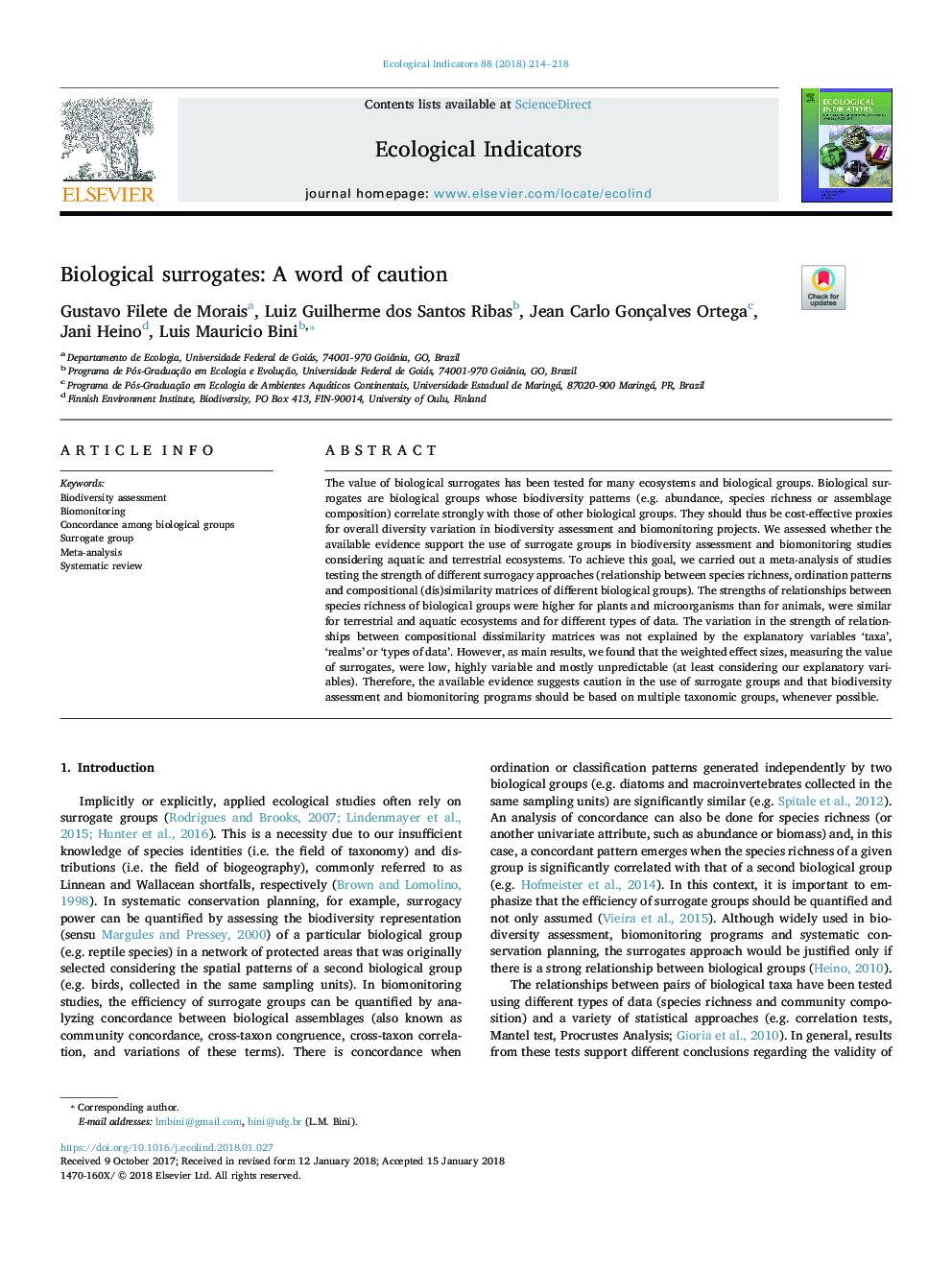| Article ID | Journal | Published Year | Pages | File Type |
|---|---|---|---|---|
| 8845585 | Ecological Indicators | 2018 | 5 Pages |
Abstract
The value of biological surrogates has been tested for many ecosystems and biological groups. Biological surrogates are biological groups whose biodiversity patterns (e.g. abundance, species richness or assemblage composition) correlate strongly with those of other biological groups. They should thus be cost-effective proxies for overall diversity variation in biodiversity assessment and biomonitoring projects. We assessed whether the available evidence support the use of surrogate groups in biodiversity assessment and biomonitoring studies considering aquatic and terrestrial ecosystems. To achieve this goal, we carried out a meta-analysis of studies testing the strength of different surrogacy approaches (relationship between species richness, ordination patterns and compositional (dis)similarity matrices of different biological groups). The strengths of relationships between species richness of biological groups were higher for plants and microorganisms than for animals, were similar for terrestrial and aquatic ecosystems and for different types of data. The variation in the strength of relationships between compositional dissimilarity matrices was not explained by the explanatory variables 'taxa', 'realms' or 'types of data'. However, as main results, we found that the weighted effect sizes, measuring the value of surrogates, were low, highly variable and mostly unpredictable (at least considering our explanatory variables). Therefore, the available evidence suggests caution in the use of surrogate groups and that biodiversity assessment and biomonitoring programs should be based on multiple taxonomic groups, whenever possible.
Related Topics
Life Sciences
Agricultural and Biological Sciences
Ecology, Evolution, Behavior and Systematics
Authors
Gustavo Filete de Morais, Luiz Guilherme dos Santos Ribas, Jean Carlo Gonçalves Ortega, Jani Heino, Luis Mauricio Bini,
